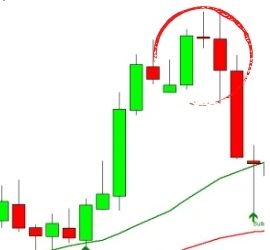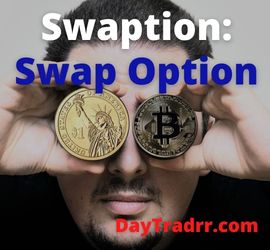What Is a Gravestone Doji?

A Gravestone Doji is a bearish reversal candlestick pattern on a stock price trading chart. It is formed when the open, low, and closing prices are all near each other with a long upper shadow. The candlestick appears like an upside-down “T”. The long upper shadow suggests that the bullish advance at the beginning of the session was overcome by bears by the end of the session. This scenario often comes just before a longer-term bearish downtrend.
The interpretation is that the bulls attempt to push to new highs over the session. However, the bears push the price action to near the open by the session close. So the long upper shadow can be interpreted that the bulls are losing momentum. Conversely, the bears are gaining momentum.
The Gravestone Doji can also be found at the end of a downtrend. However, it is more common to find one at the end of an uptrend. The Gravestone Doji suffers from the same reliability issues found in stock pricing chart visual patterns. As a precaution, traders should not act on a Gravestone Doji unless the next candle provides confirmation that a reversal is actually taking place.
What does a Gravestone Doji Indicate?
This candlestick investing pattern is commonly interpreted to indicate that trend directions are approaching a major turning point. A Gravestone Doji at the top of a bullish trend that has a long upper wick foreshadows a reversal of supply and demand trends. This would suggest the bulls have already started taking profits and shorts are stepping in to counter the trend, therefore the prices will not likely go any higher, at least for the time being.
How do you Trade the Gravestone Doji?
Next time you see this candle make sure you understand that it is a counter-trend candle. Therefore, if you are long the stock, maybe look to tighten your stop or trim some of your position. On the other hand, if you don’t have any position then it may be a good opportunity to take a short position. However, place a stop above the high of the Gravestone Doji candle.
Risk Management when Trading the Gravestone Doji Pattern
When entering a trade based on Gravestone Doji, proceed with caution like with any other trade. You should preserve your capital and place a proper stop loss. This will help to avoid significant losses if the trades go in the opposite direction. The best place to put your stop is slightly above the wick (shadow) of the Gravestone Doji. The problem is that your risk level may vary by the wick size. It may be very small or very far. In any trade, you never want to risk more than you are comfortable losing.
Limitations of the Gravestone Doji
Is a Doji bullish or bearish?
Doji means spirit. A Doji by itself is neither bullish nor bearish. A Doji tells traders that neither buyers nor sellers are gaining. Therefore, it’s a sign of indecision or neutrality. Some traders believe that the Doji indicates an upcoming price reversal. However, it should be viewed alongside other candlestick patterns to reliably establish a trend. Otherwise, it could go either way be a sign that buyers or sellers are gaining momentum for a continuation trend.
It’s important to remember that the Doji candlestick does not stand alone. It does not provide as much information as one would need to make an informed decision. But when it comes after other candles, it can have very powerful interpretations. One of those interpretations is the Hammer Doji and is spotted when a Dragon Fly Doji is followed by a strong bullish candlestick. Before acting on any signals, including the Doji candlestick chart pattern, always consider other patterns and indicators. Make sure you stick to your trading plan and risk management strategy.
Up Next: What Is a DPPs?
 DPPs are non-traded, pooled investments. They generally invest in real estate or energy-related ventures that are seeking funds for an extended period of time. They are called Direct Participation Programs or Direct Participation Plans. DPPs have a fixed lifespan, generally five to 10 years. However, they tend to be passive investments.
DPPs are non-traded, pooled investments. They generally invest in real estate or energy-related ventures that are seeking funds for an extended period of time. They are called Direct Participation Programs or Direct Participation Plans. DPPs have a fixed lifespan, generally five to 10 years. However, they tend to be passive investments.
This is a bit different from other pooled products like mutual funds and exchange-traded funds (ETFs). Most of the investments with the pooled money are in products that trade on the market, like stocks and bonds. And, you can actively trade mutual funds and other types of investments. However, DPPs have passive management. For example, non-listed real estate investment trusts (REITs), oil and gas programs, and non-listed business development companies all qualify as DPPs.
To participate, members buy in to access the DPP’s benefits. A limited partnership, a general partnership, or an S corporation subchapter usually sponsors the purchase. This setup offers many benefits to the participants. It means the DPP doesn’t pay any corporate tax. Therefore, income, credits, and others are passed through to the partner.




